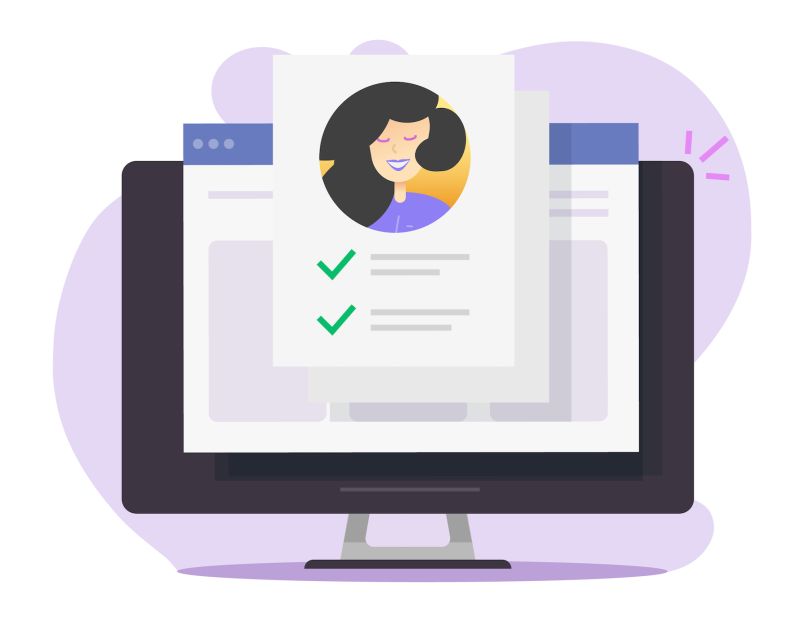What makes a customer a perfect fit?
It’s a question Amplitude Product Marketing Director John Hurley has spent a lot of time working with startup founders to answer during his ideal customer profile workshops.

On the surface, the answer seems simple. For the average B2B tech company, a great customer is someone who buys the product, gets value out of it and continues to renew and invest in upgrades.
But who are those customers and how do you identify them? That’s what an ideal customer profile is designed to answer, and it’s often where companies fall short, Hurley said.
“Normally, the answer is something generic about company size, location and maybe industry vertical,” Hurley said. “That doesn’t really help if you’re a new sales rep trying to identify which customer is likely to buy.”
At its core, an ideal customer profile is a document that details what the perfect customer looks like for a specific product — and why that customer buys it. Unlike a buyer persona, which describes the person making the purchasing decision, an ICP focuses on the company.
“Normally the answer is something generic about company size, location and maybe industry vertical.”
But it needs to be much more than a firmographic snapshot of company size and industry, Hurley said. The key is to create a profile that is steeped in customer data and tailored to each product. It has to include the specific attributes and compelling events that lead a customer to the product.
That understanding of the customer helps companies make important strategic decisions about product roadmaps, marketing campaigns and sales strategy. For sales in particular, it helps reps identify target prospects, close deals faster and bring on customers who provide more lifetime value to the company, Hurley said.
Yet most companies Hurley comes across don’t document their ICPs, and only scratch the surface of detail required in discussing them. That may be fine in the short term, but as a company grows, it could spell trouble in the form of churn.
Tips For Building an Ideal Customer Profile
- Understand your value metrics to identify your most valuable customers.
- Base your ideal customer attributes and characteristics on customer data. If you don’t have customer data yet, use surveys and interviews with early adopters.
- Expand the description of an ICP beyond company size and industry. Understanding common pain points, behavior and tech strategy makes it easier for sales reps to find target customers.
- Break prospect accounts into tiers based on how well they fit the ICP to shape your sales strategy.
- Document the profile and distribute it among marketing, sales and product to make sure all teams are aligned.
- Reassess your ICP at least once a year to make sure it’s accurate.

101: Building an Ideal Customer Profile
Use Value Metrics to Identify Your Ideal Customers
In order to identify which customers to build an ICP around, the first step Hurley has founders and heads of sales take is to define what “ideal” means to them.
This is where most leaders will reply: “Whoever is going to generate the most revenue for us over the long run.” However, customers are only going to spend money if they see value from the product, Hurley said. That’s why he asks them to start with identifying and defining their value metrics.
Value metrics give a company an objective starting point for understanding why prospects become long-term customers. For a messaging platform, it could be tied to the number of users who send a certain number of messages within 30 days. If a customer reaches that threshold, it indicates that they’re seeing value from the product and are more likely to be long-term users.
Once that’s defined, it can be easier to home in on which customers to model the ICP after.
Let the Customer Data Speak for Itself
One of the biggest mistakes a sales leader can make in building an ICP is to shape it after who they think the ideal customer is, rather than who actually uses the product. Those two aren’t always the same thing.

That’s why it’s critical to let the customer data speak for itself when building an ICP, said IBM Hybrid App Management and Integration West Leader Shonte Riddick.
“It’s hard to take a step back and remove your bias, because we’re all so attached to the portfolios that we own and the things we sell,” said Riddick, who builds ICPs for the sales and marketing team in her region. “We have to audit the way that the customers and the clients use the products or services in our existing customer base.”
Starting with the cross section of customers who align with the company’s value metrics, it’s important to dig into the data to find commonalities. Riddick focuses on seven different criteria, including company size and industry, how many years they’ve been in business, their technology environment and their goals. Those areas correlate directly with the value proposition of the product.
“We have to audit the way that the customers and the clients use the products or services in our existing customer base.”
Each company will have different criteria they’ll collect data on, Hurley added, but core categories should be based on six key attributes:
- Industry and company size.
- Region.
- Company situation, which could include technology environment, goals, market strategy and more.
- Pain points they’re experiencing.
- The impact they see from the product.
- The compelling event that brings them to your company.
From there, the trends in customer data can start to tell a story about what the hypothetical customer looks like. For IBM’s hybrid cloud applications, the ICP prioritizes companies operating in new industries built in the cloud or that are transitioning to the cloud. Other attributes of note include that the company invests in large server systems, and that its leaders are willing to transition with new products and features, Riddick said. Customers who meet those criteria are most likely to see a lot of value from the product.
The ICP should continue to be reassessed for each product once a quarter, or at least once a year, added Hurley.
A Flexible ICP Can Help Startups Find Product-Market Fit
Without readily available customer data to draw from, The Home Dispatch Founder Amirah Raveneau-Bey relies on surveys, interviews and social engagement to inform her ICP.

Her consumer-oriented company is a stealth-stage startup that aims to match home buyers with real estate agents to help them navigate the home-buying experience. Interactions with early adopters revealed patterns in home-buying challenges, lifestyle choices and more that in turn inform her company’s ideal customer profile — in this case the buyer is a person, not a company.
“We originally had the person we wanted to solve for, but you still have to validate that,” Raveneau-Bey said. “That [process] helped us redefine who that ideal customer profile is most recently.”
Her company’s ICP is a person named Sonia. Starting with a cartoon image on a whiteboard, Raveneau-Bey had her team fleshed out who the optimal user of their home-buying app would be based on those interactions with early adopters. How old was she? What did she do for work? What did she like to do in her free time? They then filled the whiteboard with notes on Sonia’s life.
“We originally had the person we wanted to solve for, but you still have to validate that.”
They determined that she’s 30 years old, lives in a big city apartment and works as a marketer. Like others her age, she’s used to managing everything she needs through apps — everything that is, but home buying.
“We tried to describe Sonia to understand who she is, so that when we find other Sonias in this space, we can say: ‘Does this validate [our assumptions]? Is there more about Sonia that we can add based on this profile?’” Raveneau-Bey said.
It’s a more person-centered version of the ICPs she would create for B2B companies in her sales leadership roles at NerdWallet and Trulia. That’s by design, as her company has a B2C component and uses that customer specificity to inform its product and customer strategy.
There’s also a reason her team brainstormed its ICP on a whiteboard. As the company brings on more customers, the team will continue to revise its understanding of who “Sonia” is. That flexibility is critical for early stage companies looking for product-market fit.

201: Putting Your ICP Into Action
It’s not like every buyer is going to match the ICP perfectly. The attributes are meant to serve as a guide for the sales team during its outreach and discovery process.
In his ICP strategy, Hurley suggests separating each ideal customer attribute out and weighting it based on its importance and discoverability. If you’re selling a cloud application, determining whether a customer is built on the cloud or is transitioning to the cloud is critical to determining their fit. Confirming that they’re a mid-size company may be less important.
Meanwhile, some information can only be found through lead data gathering tools or discovery questions. Understanding where the data can be found and how you’re going to find it can be critical to developing a sales strategy around the ICP.
“If a rep now has 50 percent of the profile filled out through lead forms and onboarding flows, now they know the rest of that is what their qualifying and discovery questions are about,” Hurley said.
It’s also important not to hew too close to the ICP when prospecting, Riddick said. Trying to find prospects who check every box can cause a company to eliminate 70 percent of their prospective customer base.
Instead, she suggests setting a minimum threshold for customers. For her, if a prospect doesn’t meet at least 40 percent of her company’s ICP criteria, then odds are they’re not a valuable customer to target.
Tiering accounts can also help a sales team build a strategy and budget around the accounts it’s targeting. In this case, tier one prospects meet 80 percent or more of the ICP criteria, tier two includes customers that fit 70 to 80 percent of the ICP and tier three meets just 50 to 70 percent. With that as a blueprint, sales teams can determine which customers to devote the most resources to and which ones are less likely to convert.
“When you don’t have a well-defined ICP, it leads to a lot of people running in different directions just trying to figure out who to target.”
Ultimately, an ICP is meant to be a guide for the sales rep helping them understand what’s most important in determining product-customer fit. During training at Amplitude, Hurley will have new reps bring in five accounts who they think fit the ICP. In doing so, they can understand how the ICP works in practice and have companies they can immediately start selling into.
Riddick also provides her sales team with a one-page guide to the ICP to help shape its discovery and prospecting strategy. These steps help turn the ICP from a hypothetical thought exercise into an actionable plan for the sales team.
“When I’ve done a well-defined ICP, it allows me to target customers better and ask better questions,” Riddick said. “That’s why it’s important. When you don’t have a well-defined ICP, it leads to a lot of people running in different directions just trying to figure out who to target. It’s not very cohesive.”




